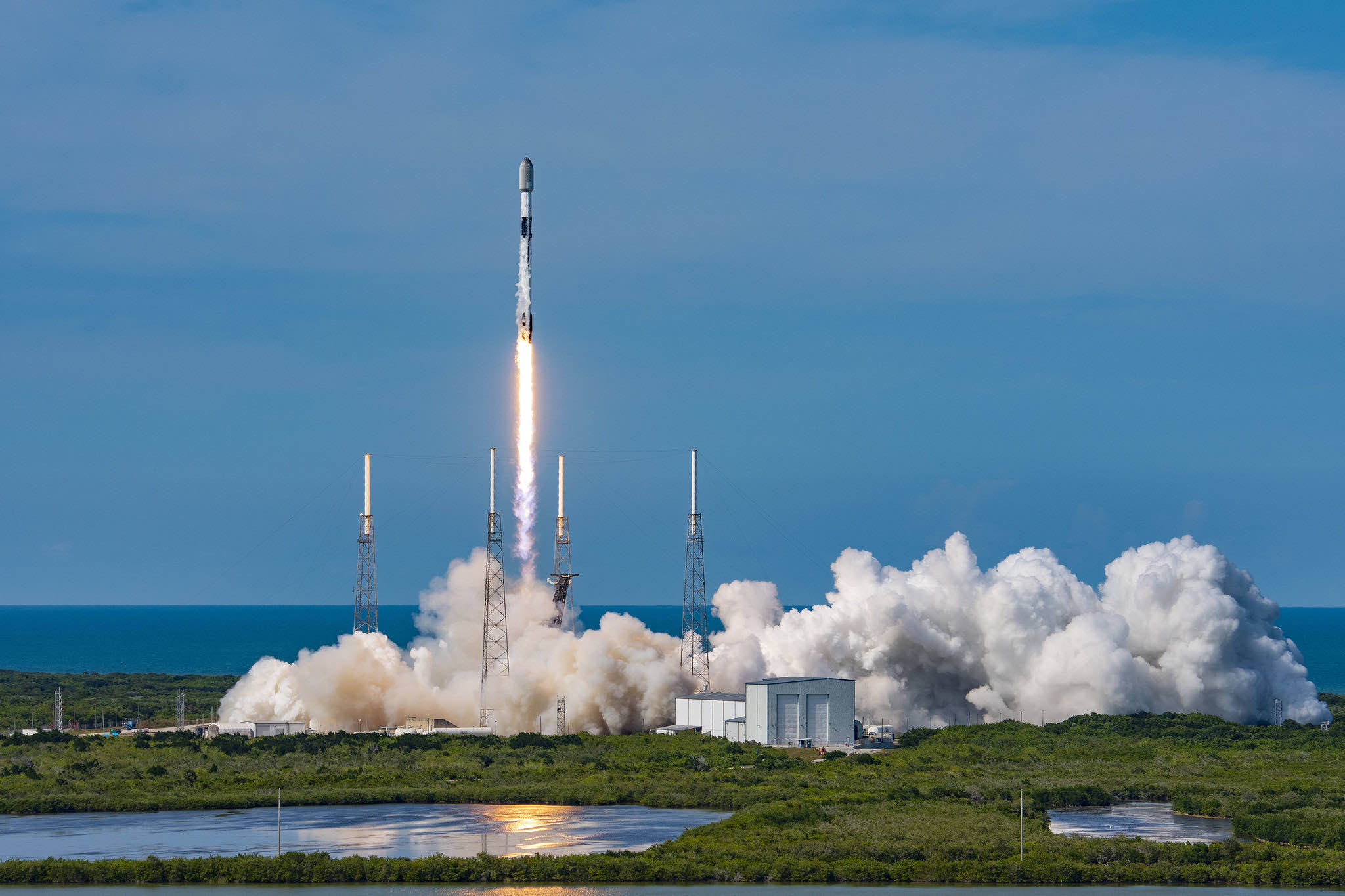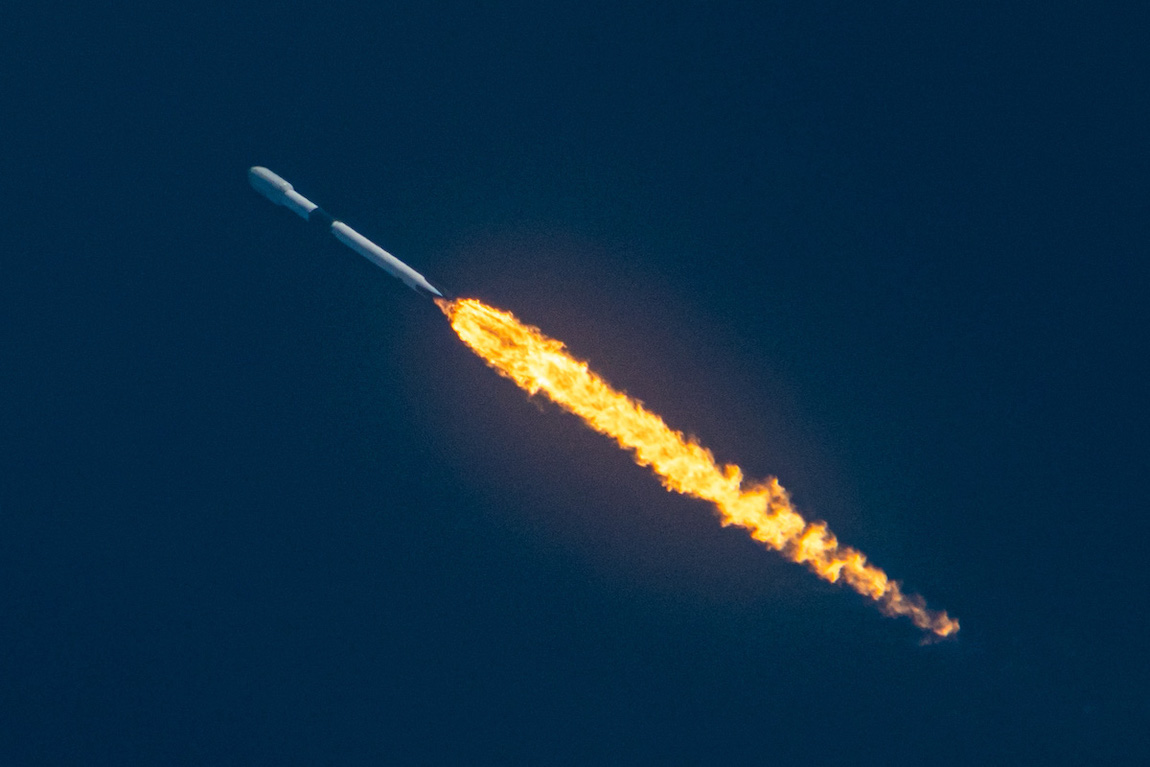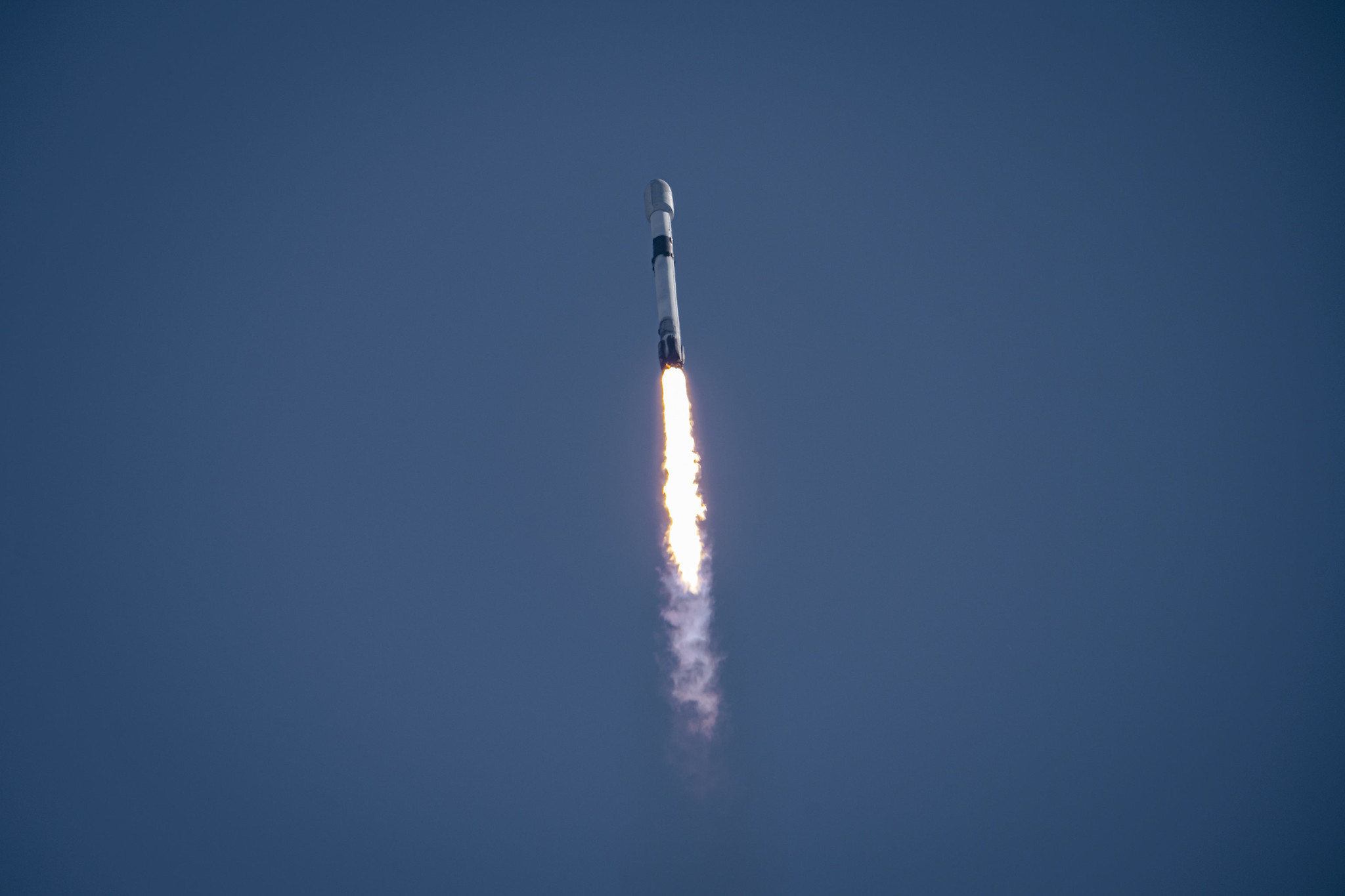
More than half of the spacecraft SpaceX needs to fill the company’s first-generation fleet of 4,408 Starlink satellites are now in orbit, following the addition of 106 new internet relay nodes launched on two Falcon 9 rockets Friday and Saturday.
Two Falcon 9 rockets each delivered 53 Starlink payloads to orbit after liftoff from Vandenberg Space Force Base in California and Cape Canaveral Space Force Station in Florida, SpaceX’s 19th and 20th missions of the year.
The second of the back-to-back launches took off at 4:40:50 p.m. EDT (2040:50 GMT) Saturday from pad 40 at Cape Canaveral. The Falcon 9 was powered by a new reusable first stage booster — tail number B1073 — that made a successful landing on SpaceX’s drone ship in the Atlantic Ocean about eight-and-a-half minutes after launch.
The Falcon 9 headed downrange northeast from Cape Canaveral, vectoring thrust from nine Merlin main engines generating 1.7 million pounds of thrust. The nine kerosene-fueled engines shut off two-and-a-half minutes into the mission, allowing the booster to separate from the Falcon 9’s single-engine second stage.
The booster extended titanium grid fins and maneuvered to a tail-down orientation using cold gas nitrogen thrusters, setting up for a hypersonic re-entry and vertical landing on the football field-sized drone ship.
The upper stage fired its engine two times to place the 53 flat-packed Starlink satellites into the correct orbit nearly 200 miles (more than 300 kilometers) above Earth, at an inclination of 53.2 degrees to the equator.

SpaceX confirmed the successful deployment of the Starlink satellites, built on an assembly line in Redmond, Washington, about an hour into the flight. Retention rods kept the satellites firmly attached to the launch vehicle during the climb to space, and the spacecraft were cast free from the rocket’s upper stage with the jettison of the retention devices.
The spacecraft, each more than a quarter-ton in mass, were expected to unfurl solar panels and run through automated post-launch activations and checkouts. Krypton-fed ion thrusters will propel the satellites to their operational altitude at 335 miles (540 kilometers) over the coming weeks and months.
The launch Friday from Vandenberg began at 6:07 p.m. EDT (3:07 p.m. PDT; 2207 GMT), carrying 53 Starlink satellites to a similar orbit.
With the 106 satellites launched on consecutive days, SpaceX has now deployed 2,600 Starlink satellites since the program began launching test spacecraft in 2018. Some of those satellites were prototypes or have been decommissioned.
An unofficial tally of the Starlink satellites now in SpaceX’s internet constellation shows 2,321 spacecraft currently in orbit and functioning, according to Jonathan McDowell, an astrophysicist and longtime tracker of spaceflight activity.
That’s more than half of SpaceX’s first-generation network of 4,408 Starlink satellites.

The 4,408 satellites will be spread among five different orbital “shells” at different altitudes and inclinations. SpaceX, founded and led by Elon Musk, has signaled it eventually intends to launch as many as 42,000 satellites.
The network beams high-speed, low-latency internet signals around the world, reaching consumers, underserved communities, and other potential users like the U.S. military. SpaceX says the Starlink network is now available to consumers in 32 countries.
By a wide margin, SpaceX’s Starlink constellation is the largest fleet of satellites ever placed into orbit. OneWeb, a rival of SpaceX on the space-based internet market, has deployed 428 of its planned 648 first-generation satellites into orbit, good enough for second on the list of largest spacecraft fleets.
SpaceX plans to launch another batch of Starlink satellites on the Falcon 9 rocket mission Wednesday from NASA’s Kennedy Space Center in Florida.
Email the author.
Follow Stephen Clark on Twitter: @StephenClark1.
